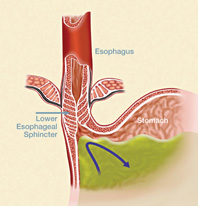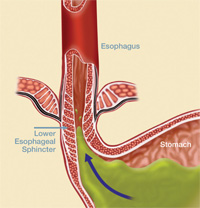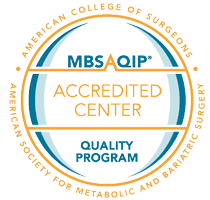Reflux


The esophagus is a muscular passage which carries food from the mouth to the stomach. The lower esophageal sphincter (LES) is a circular band of muscles at the lower end of the esophagus that acts a barrier between esophagus and the stomach.
Gastro-esophageal reflux disease (GERD) is a chronic disease that occurs when the lower esophageal sphincter closes incompletely allowing the stomach contents to leak back or reflux into the esophagus. It can cause heartburn, a burning sensation felt in the chest or throat when the refluxed stomach acid touches the lining of the esophagus.
Laparoscopic Nissen Fundoplication and the LINX procedure is a minimally invasive form of anti-reflux surgery performed to restore the function of lower esophageal sphincter.

Indications
- GERD
- Hiatal hernia is a condition in which the stomach bulges up into the chest through an opening in the diaphragm.
- Chronic esophagitis (inflammation of esophagus)
- Failed conservative treatment measures such as medications and lifestyle modification.
Nissen Surgical procedure
Nissen Fundoplication can be performed surgically with a laparoscopic technique under general anesthesia.
Laparoscope is a small fiber-optic viewing instrument made up of a tiny lens, light source and a video camera. The camera attached to the laparoscope displays the image of the abdomen on a monitor, allowing the surgeon to view the internal structures.
The surgeon makes small incisions in the abdomen. In one incision, the laparoscope is introduced to view the abdomen. Along with the laparoscope, sterile solution is injected which expands the abdominal cavity, giving the surgeon a clear space to operate. Other portal is used for the insertion of surgical instruments to repair the leak of gastric acid. The surgeon then wraps the stomach around the esophagus to prevent the back up of acid from the stomach into the esophagus. At the end of the procedure, incisions are closed with sutures.
The benefits of laparoscopy are smaller incisions, faster healing, a more rapid recovery, shorter rehabilitation period, and less scarring. It is often performed on an outpatient basis and the patient is able to return home on the same day.
It is much less traumatic to the muscles, ligaments and tissues than the traditional method of surgically opening the abdomen with long incisions (open techniques).
After the surgery
Following the surgery, your surgeon may recommend you follow certain measures for a successful outcome:
- Avoid heavy lifting and activities that put excessive pressure on the abdomen.
- Your doctor will prescribe medications to relieve pain.
- Keep the incision area clean and dry.
- Your surgeon will recommend you drink liquids and eat only soft foods for 2-4 weeks following surgery.
Complications include stomach bloating, dysphagia (difficulty swallowing), loosening of the wrap, and recurrence of the symptoms.
Talk to your doctor if you have concerns regarding anti-reflux surgery.
You will need the Adobe Reader to view and print these documents. ![]()

